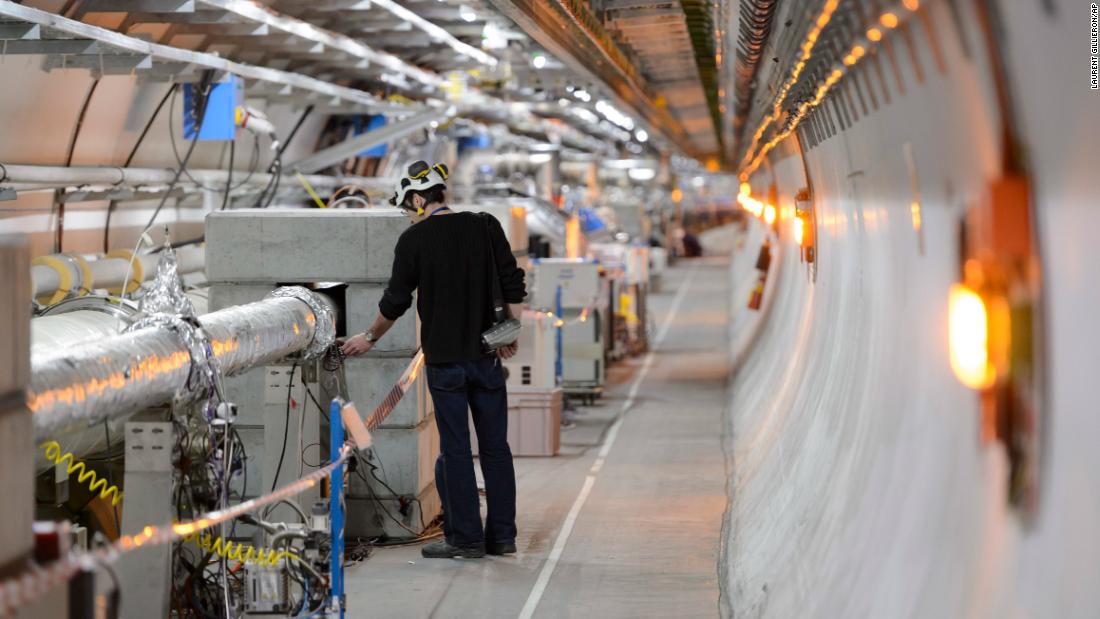
CERN said on its website that the collider magnets “squeeze” tiny particles causing them to crash together, which scientists then observe.
These particles are so tiny, CERN said, that lining them up to smash together is “akin to firing two needles 10 kilometers apart with such precision that they meet halfway.”
Improvements to the collider mean scientists will be able to study the Higgs boson in “great detail,” CERN said in a press release Friday.
Now a team of experts hope to be able to collide yet more particles together with the aim of understanding the mysteries of dark matter — an invisible and elusive mass that can’t be seen because it doesn’t absorb, reflect or emit any light.
A complex operation, fraught with ‘tension’
Dark matter is thought to make up most of the universe’s matter, and has previously been detected by its ability to create gravitational distortions in outer space.
Scientists will also focus experiments that they hope will increase their knowledge of cosmic ray showers — which occur when tiny particles from space come into contact with the atmosphere and then “shower” down to earth, said CERN.
The Large Hadron Collider was first launched in September 2008 and has been closed for three years for an upgrade. Turning it back on was a complex operation.
Switching it on “comes with a certain sense of tension, nervousness,” Rende Steerenberg, who is in charge of control room operations, told Reuters earlier this week.
“It’s not flipping a button,” he said.